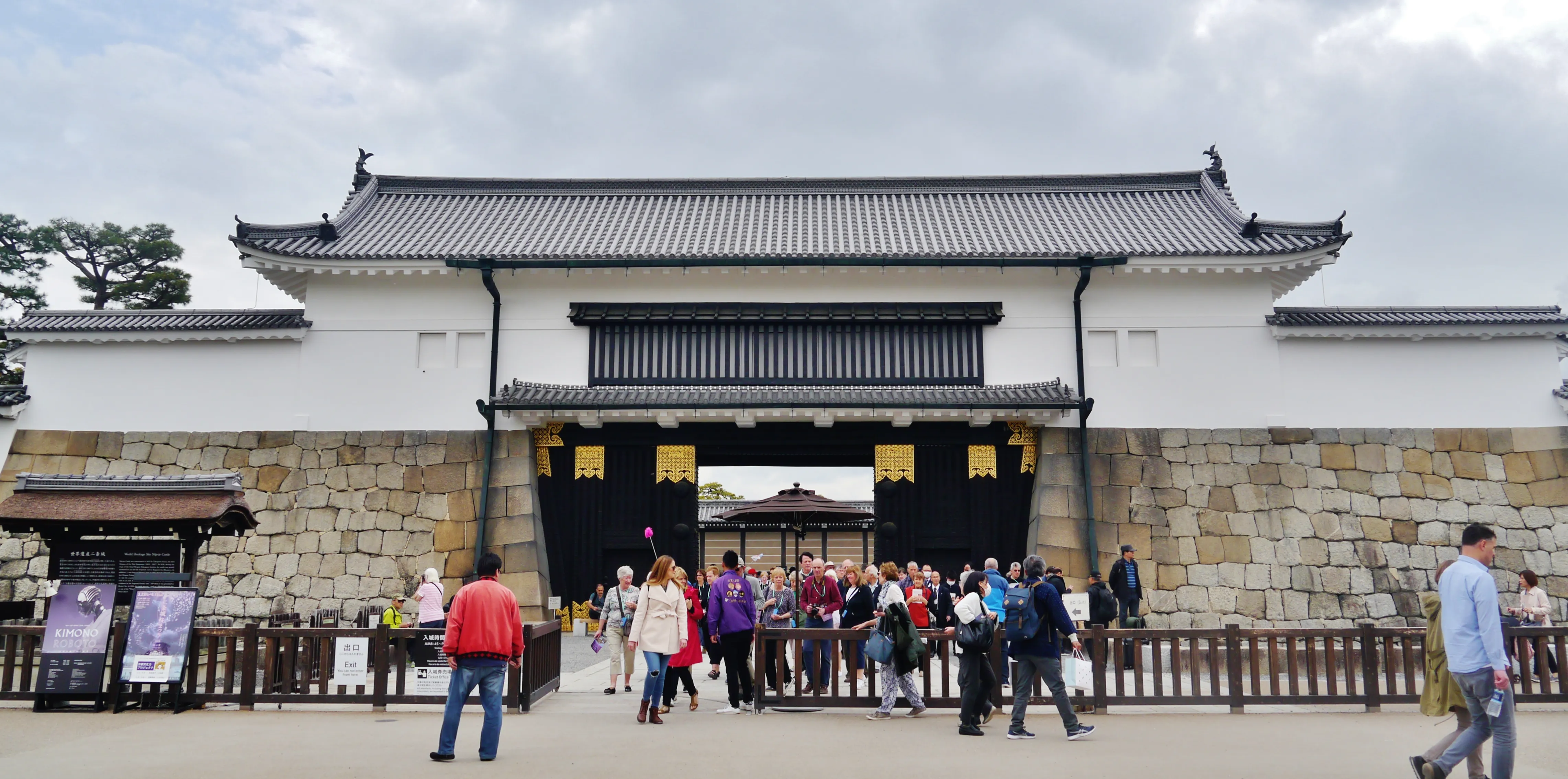

Higashi Ote-mon / Nijo Castle
Higashi Ote-mon Gate plays a historically and architecturally important role as the main gate of Nijo Castle. Located on the east side of Nijo Castle, this gate has served as the castle's main entrance and exit. Its imposing appearance and elaborate decoration symbolize the samurai culture and authority of the Edo period. The East Main Gate dates back to 1603, when Tokugawa Ieyasu built Nijo Castle. From the beginning, it was designed as the main gate of the castle and served as a gateway to welcome visiting feudal lords and shogunate officials. Later, when Nijo Castle was extensively renovated by Tokugawa Iemitsu in 1626, the gate was also reconstructed to approach its current appearance. The purpose of this renovation was to welcome the Emperor Gosui's visit to Nijo Castle, and the gate was also intended to show the power of the warrior class at that time. The East Ote-mon Gate was designed as a multi-tiered turret gate, with a two-story gate rising above the stone wall. Its architectural style is both solid and beautiful, and is highly regarded among castle buildings. In particular, the upper level of the gate was designed to provide space for warriors to live and guard, and to serve as a defense in times of war. In addition, the decoration is decorated with family crests and carvings, expressing the prestige of the Tokugawa Shogunate in many places. In 1994, Nijo Castle was registered as a UNESCO World Heritage Site, and the gate is now considered an important component of this heritage. Today, the East Gate is used as an entrance for tourists visiting Nijo Castle, and many visitors can feel the history and dignity of the castle. As you pass through the gate, you will feel the significance of this place, which is a fusion of Japanese power and aesthetics of the Edo period.